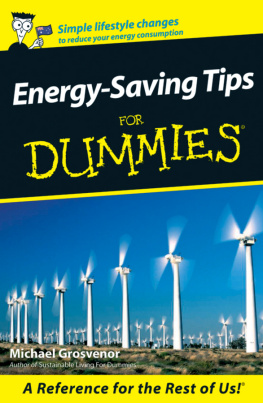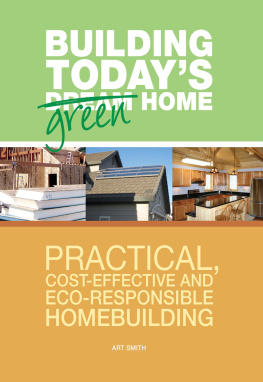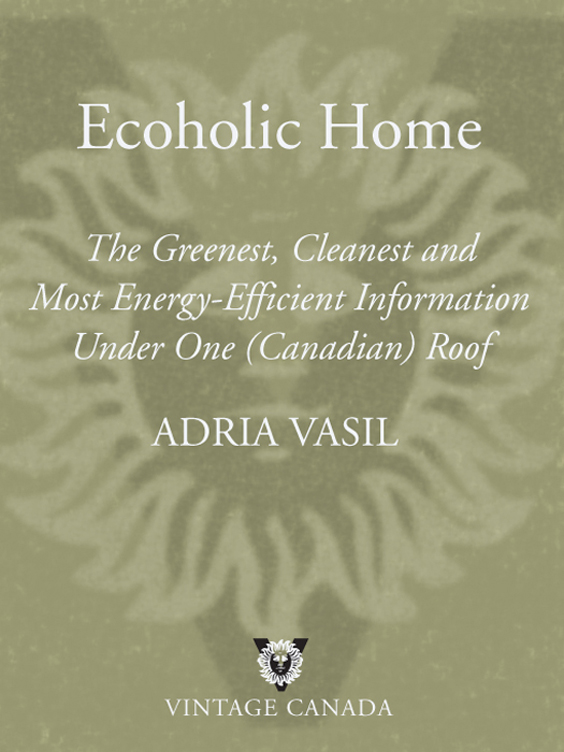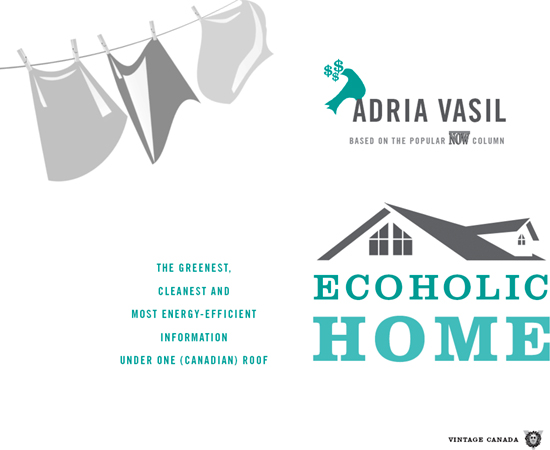CONTENTS
INTRODUCTION
Peel away the layers and one thing most Canadians have in common is a roof over our heads (the pelting snow that whacks us in January kind of necessitates that). Now, whether that shelter takes the form of a tiny apartment on the 20th floor of a drafty old building, a 5,000-square-foot McMansion in the burbs or a remote wooden cabin with bears for neighbours, we all know we can do a little more to green up this country. In fact, we have to. Canadian households are responsible for a whopping 46% of the nations total climate-cooking emissions (ha, and you thought your a/c cranking could go unnoticed). A large chunk of those greenhouse gases comes from obvious sources like the car you have parked outside, the fuel in your furnace and the electricity you pull from the wall, but a surprising percentage of emissions comes buried in all the things we buy (from flatscreen TVs to imported lettuce). No matter where those greenhouse gases come from, one things clear: were getting more and more bloated with every passing decade.
But here in Ecoholicland, we like our eggs sunny side up. Which means we should take a moment to commend ourselves for the fact that a whopping 90% of us have already made some moves to ease our impact. Were changing our light bulbs, buying low-flow shower heads and turning down the thermostat in record numbers. And all this stuff makes especially good sense when times are tight and our wallets are a little slimmer. Keeping our bank accounts and the planet green are zen-ly one and the same. Just ask your grandparents: saving energy, saving resources hell, saving rubber bands saves you money. And if were smart about where we put our cash and we make sure that what we bring into our kitchens, bathrooms, bedrooms and basements is truly earth-friendly, we can all help guarantee that our address on the third rock from the sun stays peachy green.
We just have to remember that we cant buy our way out of this mess. Putting organic curtains on the credit card isnt whats going to save the planet from ourselves. Of course, if you have to make a purchase, then, yes, put your money on the most environmentally sound option you canand make sure that its really as earth-friendly as it claims to be. Thats what Ecoholic Home is all about, reallyhelping you make those choices. But at the end of the day, you and everyone in your household will be the biggest superheroes if you make reduce and reuse your two favourite words, and along the way turn your gassy, energy-gulping home into a lean, green, planet-rescuing sanctuary. Hell, Ill even sew you a big lime-coloured cape if you do.

Follow this birdy and youll find more money in your wallet.

Sniff out questionable green marketing claims (a.k.a. greenwash) by tracking down this symbol.
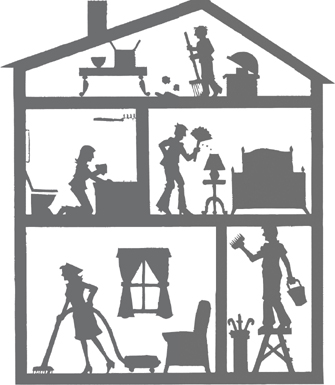
CLEANING
Youre not fully clean until
youre zestfully green
When I was growing up, my familys home was so clean I swear I could see a bald man winking at me from the kitchen tiles. Still, that was nothing compared to the frenzy of daily spritzing, sterilizing and disposable-mop tossing going on in the world today. We might be trying to keep our families safe from germs, but (wait, let me get my pipe and sweater vest out) todays young uns are growing up too clean. The hygiene hypothesis says childrens bodies dont learn how to duke it out with germs, and in the end they get knocked down by allergies, asthma and eczemamore than kids in much poorer countries ever do. Not only that, but were also misting the air with so many chemicals that pollution levels inside our homes can be 100 (sometimes up to 1,000) times worse than they are outdoors. Its time to air the dirty laundry, kids, and breathe in a new type of clean.
CONVENTIONAL CLEANERS
How could products we casually clean our homes with end up contaminating our bodies and the environment so? Easyno ones stopping their use. I could give you a list of toxic cleaning chemicals to avoid, but whats the point? The government hasnt made it mandatory for companies to list their ingredients (see the Your Right to Know sidebar). Although, if you need a quick rundown of the toxins in conventional products to win the green cleaning argument with your partner/roommate/mother, heres a small taste of what youre bringing into your home on cleaning day: asthma-triggering volatile organic compounds (in degreasers, disinfectors and virtually every air freshener), endocrine-disruptors like DEGME (in floor cleaners), neurotoxins like toluene (in all-purpose cleaners), liver-damaging and lung-irritating phenols (in all-purpose cleaners), nerve-damaging butyl cellosolve, a.k.a. 2-butoxyethanol (in most oven and auto cleaners and all-purpose cleaners such as Simple Green), as well as estrogen-mimickers like nonylphenol ethoxylate (the chemical found in some degreasers, disinfectants and stain removers such as Cloroxs Stain Out, which is gender-bending rainbow trout). Sure, that last one, nonylphenol ethoxylate, was officially declared toxic by Canadian federal officials back in 2001, but that doesnt mean it was banned from shelves. Companies were told they had till 2010 (a whole nine years) to reduce their use of the toxin by 95% below 1998 levels. The battle of the mops rages on, particularly south of the border, as enviros and fishermens groups demand a full-on ban.
How could products we casually clean our homes with end up contaminating our bodies and the environment so? Easyno ones stopping their use
In early 2009, it looked like Canadians had new reason to get excited when the feds announced theyd be targeting a few more major health hazards found in cleaning products. But once again, they didnt quite go far enough. For instance, tumour-inducing thiourea, found in tarnish and silver polishes, will be restricted in new products but will still be allowed in existing consumer products (gee, thanks). Endocrine-disrupting DEGME is being banned from cosmetics, but the feds are still mulling over whether it should be banned from floor cleaners, too. Still waiting to hear whether diethyl sulphate, a former chemical warfare agent (no kidding), will definitely be banned from existing fabric softeners. In the meantime, Im not sure how comforting it is to know these toxins have been hiding in common household products for years and might still be on shelves, though at least some are on their way out.
At long last, Canada is officially banning phosphates from dishwashing detergent by 2010. The ingredient was largely phased out of laundry detergent way back in Wham!s heyday, but for some reason dish detergents got to keep it (maybe because some big-brand dishwashing detergents are said to contain up to 40% phosphates). Why the big fuss? Phosphates are an important plant nutrient (that just so happens to be good at removing fatty grime and preventing dirt from settling back onto your dishes during the wash cycle), but too much of it in the environment is definitely a bad thing. The heavy presence of phosphates in water feeds blooms of toxic blue-green algae that have invaded lakes and rivers across the country, causing serious health scares. Drinking water contaminated with these algae, known as cyanobacteria (a.k.a. pond scum), will make you nauseous, headachy and feverish. It also builds up in fish and can kill your dog if Scruffy drinks from an affected lake.


